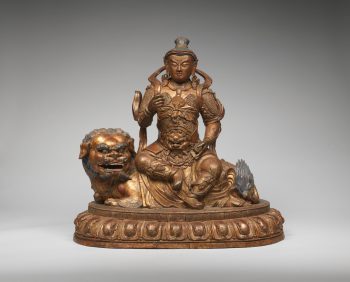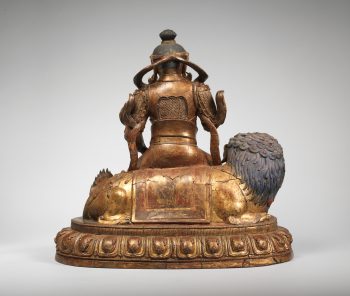China
16th century



China
16th century



While the primary religious goal for followers of Buddhism is enlightenment, many of the practices also serve secular goals related to daily life, including ethical conduct and cultivating well-being.
In Buddhism merit is accumulated through engaging in positive actions that lead to positive results, such as better rebirths. Buddhists gain merit by making offerings, donating to those in need, reciting mantras, and other good deeds.
Prescribed practices that carry symbolic meaning and value within a specific tradition and are intended to attain a desired outcome. Rituals are usually done as part of a ceremony or regular routine.
Himalayan art includes portraits of legendary and historical humans, including accomplished religious teachers (lamas), the Buddha’s original disciples (arhats), and spiritually accomplished tantric masters (mahasiddhas).
Although Tibetan Buddhism was not practiced broadly in China, the imperial centers, such as Beijing and Mount Wutai, emerged as hubs of Tibetan Buddhist cultural production. The emperors of the Mongol Yuan (1271–1368), Chinese Ming (1368–1644), and Manchu Qing (1644–1911) dynasties harnessed Tibetan Buddhist ideas to consolidate their power.
Get the latest news and stories from the Rubin, plus occasional information on how to support our work.